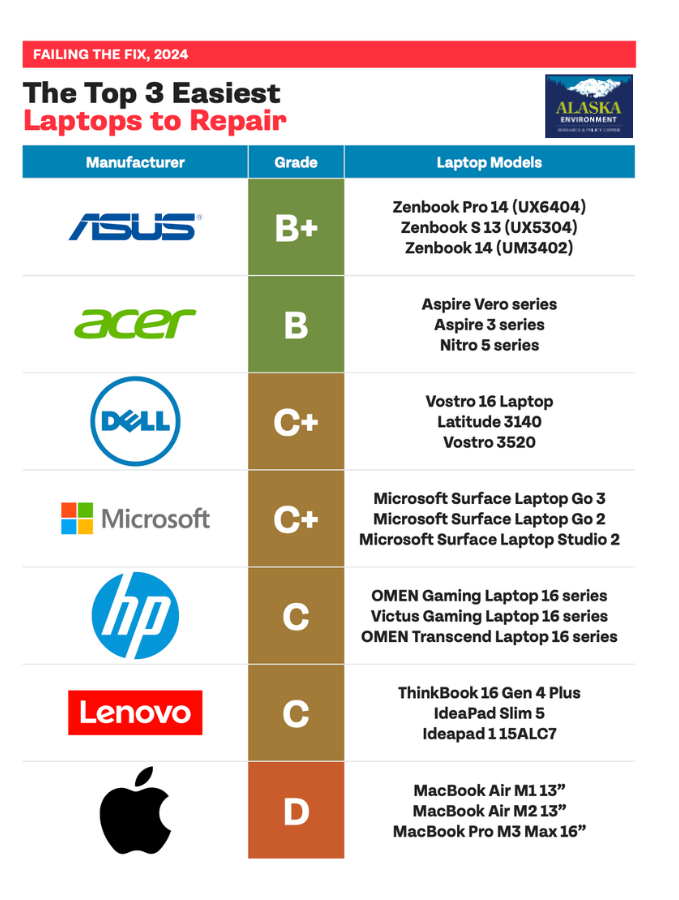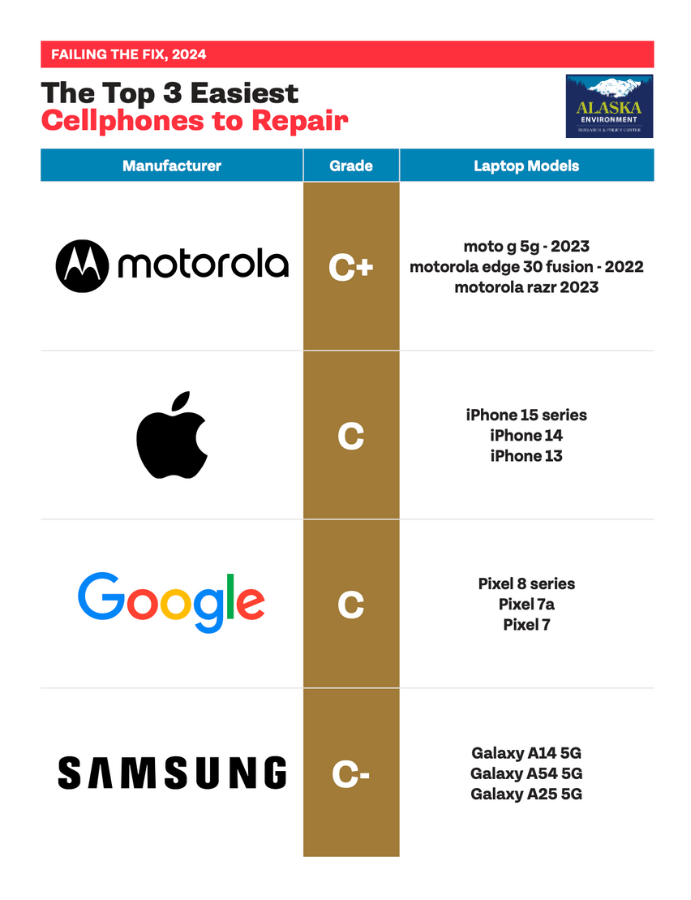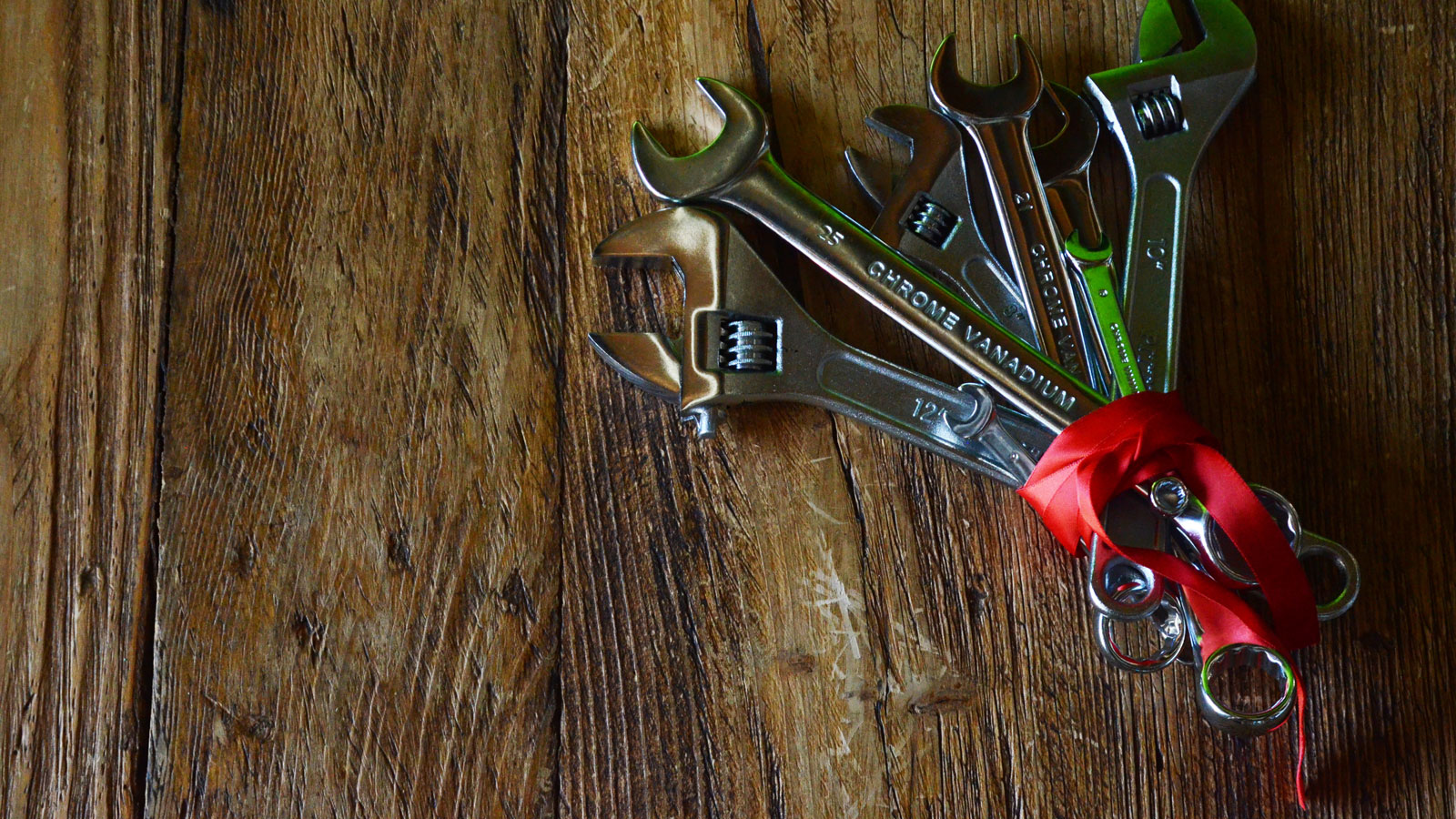
Failing the Fix (2024)
Grading Laptop and Cellphone Companies on the Fixability of their Products

Downloads
Nobody walks into an electronics store and thinks, “I’m going to buy something that breaks.”
Many of us have purchased something, or received a gift, that nearly immediately stopped working after we bought it. Many phones and laptops on the market are made to be so difficult to fix they become essentially disposable. Consumers would like to choose electronics that are durable and fixable, but how do we know which products are designed to last and which are destined for the dump?
This report calculates a repairability score for the most popular cell phone and laptop brands, and grades which manufacturers are designing devices to last and which are “Failing the Fix.”
Since January of 2021, France has required companies to provide detailed information about how fixable certain products are, and to post an overall repair score at the point of sale. Our third edition of “Failing the Fix” reviews the detailed repair information now available from this requirement for 164 devices and tracks changes in grades since our last report. This year’s edition also includes a section highlighting the three most repairable cell phones and laptops available on the market from each manufacturer to guide consumers looking to buy a fixable device.
Overall, scores have increased for cell phones indicating that repair scores are continuing to incentivize manufacturers to design more repairable products. Unfortunately, improvement has not been consistent across product categories, with laptops having fallen according to several of our measurements.
Motorola leads cell phone manufacturers with a C+, while Apple and Google are tied for second place, each earning a C. Samsung lags with a C-. For laptop manufacturers, ASUS leads in repairability with a B+, followed by Acer with a B, DELL and Microsoft are tied for third each scoring a C+ grade, HP and Lenovo follow each earning a C, and Apple is in last place with a D.
Some notable trends from last year have continued, including that Chromebooks, while more affordable than other devices, continue to be less repairable than other laptops. Apple continues to be in last place for laptop manufacturers, but improved the most among cell phone manufacturers, surpassing last year’s D to earn a C this year. The iPhone maker’s higher marks partially result from a significant increase in the ease of disassembly of their products.
Unrepairable devices are a disaster for the environment and fuel a growing electronic waste crisis. Globally, we trash 59 million tons of used electronics (the weight of 161 Empire State Buildings) each year. Electronic waste is the fastest growing waste stream in the world, and the U.S. EPA reports that it is the fastest growing part of our domestic municipal waste stream.
Fixable devices are also a boon for Americans looking to save money. An average family spends nearly $1,500 on new electronics per year. A previous PIRG report found that consumers could save a combined $40 billion if they were able to repair instead of replace products and extend the lifespans of their electronics by 50 percent.
These detailed repairability information provided by manufacturers in France are composed of five categories which help consumers understand what challenges they could face during repair. Our report more heavily weights the disassembly score because we think this better reflects what consumers think a repairability score indicates and because the other categories can be country specific. Consumers’ ability to fix their devices is limited by efforts to stop the Right to Repair, so our final grades remove points from companies who are members of trade groups which lobby against repair legislation. This year’s addition also deducts points if manufacturers don’t easily provide full information on how they calculated their products’ repair scores. (See more in the methodology section.)
Consumers who seek to purchase easily repairable products – especially from companies who do not fight to prevent Right to Repair– can use these grades as a starting point for comparison shopping. Additionally, repair scores encourage companies to design products that are repairable and stop supporting trade associations that lobby against Right to Repair legislation. Both are important steps to protect consumers and our planet.

Photo by Lucas Gutterman | TPIN

Photo by Lucas Gutterman | TPIN
Topics
Authors
Lucas Gutterman
Director, Designed to Last Campaign, PIRG
Lucas leads PIRG’s Designed to Last campaign, fighting against obsolescence and e-waste and winning concrete policy changes that extend electronic consumer product lifespans and hold manufacturers accountable for forcing upgrades or disposal.
Find Out More

Fixed for the Holidays

Fixed for the Holidays
Full Letter— Parents, environmentalists to Google: stop Chromebooks from expiring this summer

